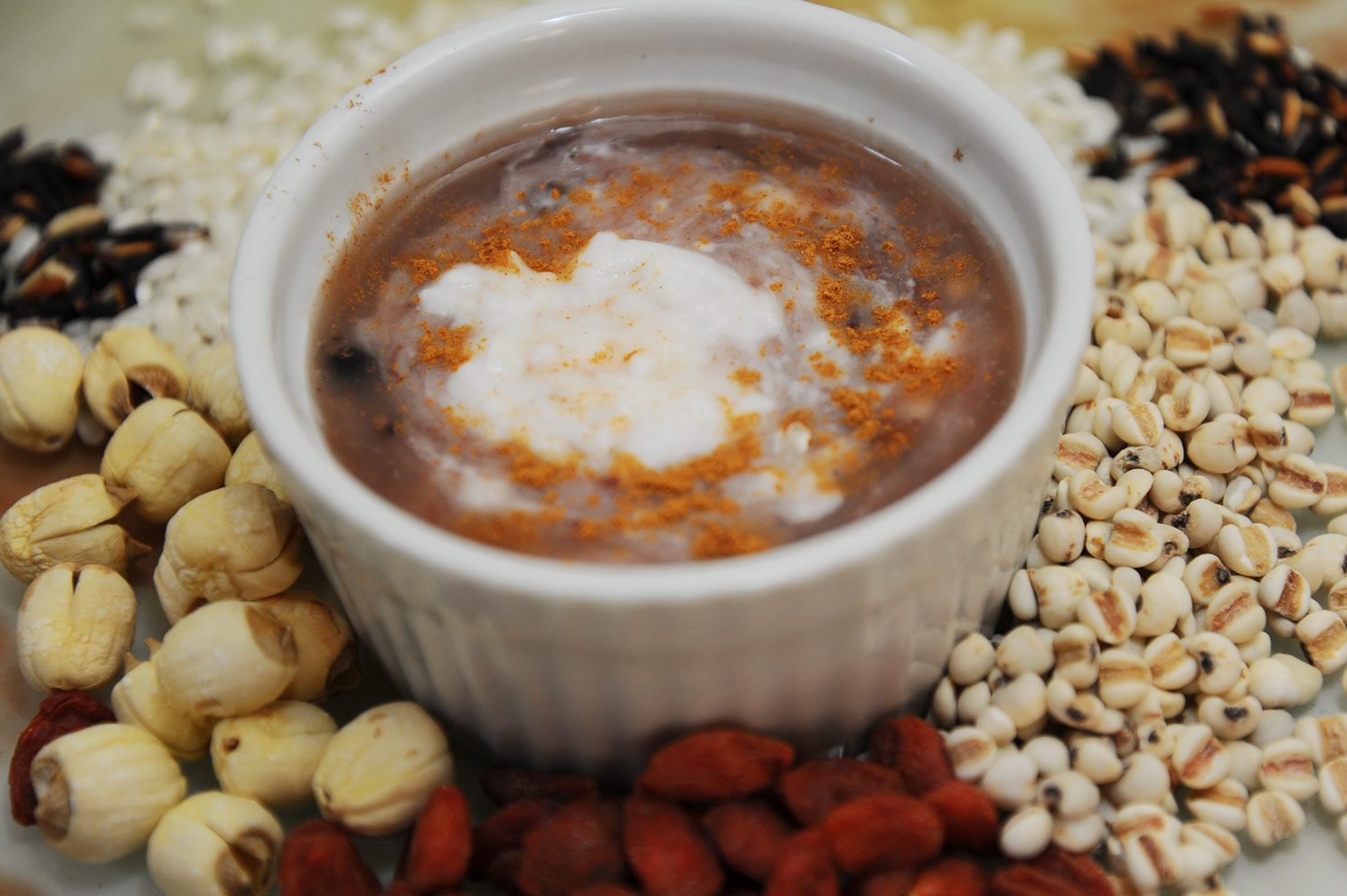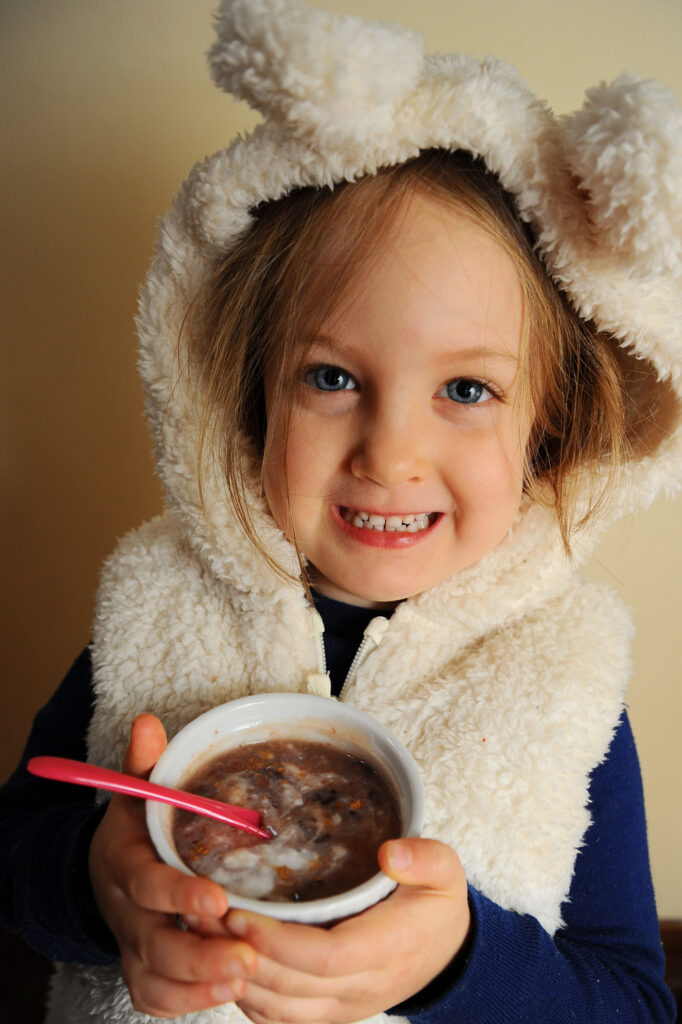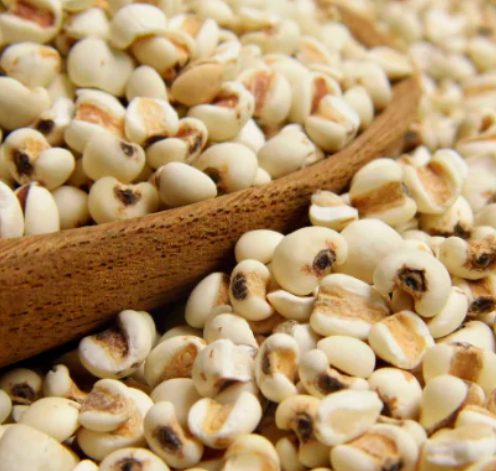0:00
/
0:00
Wake up Call to Family of Light
Award-winning detoxification formulas to restore your health
Explore the above menu

































Used for centuries in Traditional Chinese Medicine, Congee is a soupy rice mixture that can be tailored to meet one’s individual needs. Traditionally it is made with rice, but it can be made with a variety of grains and ingredients.
It is beneficial for those with poor digestion and anyone recovering from illness. It is my go-to when I need to do a food drop for someone in need. It is perfect for new mums as it promotes milk production as well as aiding recovery from a mammoth task!. With everyone so busy, it is a perfect care package gift as it takes very little energy to prepare and is received with immense gratitude and satisfaction.
My congee simmers in the slow cooker overnight and it is so amazing to wake up to a big pot of congee for breakfast! I store the extra congee in the fridge and heat it for a quick meal adding flavours to please. It is super easy to pack it in a thermos for out-and-about meals too.
As food prices and the cost of living go up, congee is a good recipe to keep in your back pocket to save a buck. One person I cooked it for likened it to gruel and did a full reminisce of the Oliver Twist movie..and did most definitely ask for more. On that note, Oliver Twist exposes serious institutional childhood abuse and is heartbreaking. Child Abuse and Social Crime are interrelated as the former is the consequence of the latter. Society is largely responsible for the condition of all its members not just the elitists.
Congee is VERY cheap to make but includes tailored ingredients to meet nutritional needs and is made with healing love and good intentions. The variations are endless, play around and you will never get bored! If you have a health specialist, please check in with them about making it to suit your specific needs.
In essence, congee is rice overcooked in liquid. The purpose of overcooking the rice is to allow it to release starch which gets mixed with the cooking liquid to create a porridge. In other words, it is essential to use rice with high starch content. As a general guide, know that the shorter the rice grain, the starchier it is. Therefore, long grain rice like basmati is NOT ideal for cooking congee. I use a combination of short-grain black rice and short-grain jasmine rice. You can use non-starchy rice variations if you want a different texture. It is also important to not over-wash the rice as it will wash away the starch.

Phytic Acid and soaking grains
According to The Weston A Price Foundation https://www.westonaprice.org/health-topics/vegetarianism-and-plant-foods/living-with-phytic-acid/It is a good idea to soak grains for a day or so before adding to the congee, this is easily done – just pop it all in the slow cooker during the day to soak then before bed rinse lightly, add your ingredients and press cook.
When you soak whole grains in warm water overnight, you activate the enzyme phytase. This enzyme then works to break down phytic acid which binds minerals like iron, calcium, and zinc. As phytase does its magic, it releases minerals in whole grains and makes them easier for your body to absorb.
In a nutshell, the centuries-old process of soaking grains, also known as culturing, helps to break down the antinutrients and hard-to-digest components of the grain and at the same time, helps to release highly beneficial nutrients.
Because white rice is milled, meaning the husk, bran, and germ have been removed it has less phytic acid and doesn’t require soaking but I do it anyway.
Ingredients to nourish
Bits and bobs that I often throw into the pot are black, white or brown rice, hemp seeds, walnuts, jobs tears and lotus seeds. Other flavours I often add to the mix are pepitas, goji berries, jujubes, hawthorn berries, juniper berries, ginger, cinnamon and nutmeg. I’ve never done a savoury recipe, but I reckon a mushroom congee would be great to try. The choices are limitless. Many of the ingredients above are available from your local Asian supermarket.
I will run through a few of the ingredients today and their health benefits.
Jobs Tears
Jobs Tears are also known as Chinese Pearl Barley, Coix Seed or in Chinese yi yi ren or yi mi (薏苡仁/薏米)
The Chinese believe that the Chinese pearl barley is diuretic, anti-swelling, pus-expelling and cooling. It is, therefore, most recommended to people suffering from stiff and painful joints, rheumatism, warts and eczema. It is also gluten free!
Please don’t confuse them with regular pearl barley. Chinese Pearl Barley is not even a type of barley.
It is important to be able to differentiate the two if you intend to consume job’s tears for their curative and medicinal properties. To clear the air, here are 2 pictures of the 2 grains.


Lotus Seeds
Lotus seeds formed from the flowers of the Lotus plants. These seeds are known as lotus nuts, fox nuts or gorgon nuts.
The lotus seed is a rich source of calcium, potassium and phosphorus. These properties are useful as the main components to stimulate teeth and bones to reformation. Besides that, the lotus seed stimulates blood clotting and activates some enzymes. The other benefit of this seed is the calming nerve conduction proponent. Lotus seeds are also useful in maintaining the flexibility of muscle and the rhythm of the heartbeat. The phosphorus component helps protein circulation and maintains the carbohydrate and acid balance.
Lotus seed has a sedative effect. They are also useful to improve brain function and memory and also prevent senile dementia happen. It’s low in sodium and high in potassium, so it reduces blood pressure and is good for diabetics, too.
It’s also gluten-free. It’s such a flexible product and can be a boon to anyone following a plant-based diet. A low-carb food, it is also suitable for the keto diet.
As the seed is harvested in stagnant wetlands, no fertilisers or pesticides are needed, making them naturally organic.
In Chinese medicine Lotus seeds:
• Tonify the spleen and binds – chronic diarrhoea, loss of appetite.
• Tonify the kidneys and stabilize the jing – stop leukorrhea and spermatorrhea, premature ejaculation.
• Nourish heart, calm the spirit – irritability, anxiety, palpitations, insomnia.
Uncontaminated water source
To make Congee, you need a lot of water. Please ensure you filter your water from contaminations.
Life on Earth began in water and evolved from it.
The cells inside your body are surrounded by a fluid that is mostly water and your cells themselves range from 70% to 80% in water content. Water is the biological medium here on Earth and the supporter of all life forms.
Water circulates through our body without rest and causes the macromolecules (proteins, enzymes, and genes) and cells in the body to function properly. When information is passed from tissues to tissue, it is water that delivers this information.
Our government has a duty to provide us with water that is safe to drink, however the water quality at the point of consumption may not always be complimentary for our short or long-term health. Contaminants including heavy metals, chemicals such as chlorine, pesticides, bacteria, organic & in-organic compounds all can be present in our drinking water.
At Collective Rising we are affiliates of Waters Co Water Filters. Their filters effectively turn contaminated tap water into refreshing, clean, sterilised drinking water, with all the mineral nutrients as nature intended. their filter systems are also designed to re-introduce natural trace minerals beneficial to health and create living energetic water that offers the highest level of hydration! Their products use glass or safe non-chemical & hormone leeching, BPA free material.
Waters Co Ltd operate a full time research centre where some of the worlds leading scientists in their respective fields examine water quality issues, to not only address an ever growing number of contaminants found in our drinking water but also to ensure our commitment to you in making the best quality drinking water for your continued health. Their products are a culmination of the equivalent of hundreds of years of scientific research, combined with ancient wisdom and nature’s timeless principles.
As well as being the first to market with water filter systems of this kind, for over 30 years we have continued to break ground with world first filtration technologies incorporated into our systems including, bio ceramics, Somelite ™, Jade stone, organic Germanium and more.
This recipe is created and shared courtesy of Krystal Torney. Please make it your own and share it with people you love.
The variation of Congee are unlimited. For a range of Congee options check out the below list: Healing Congee (Chinese Rice Porridge) – Phoenix Rises Acupuncture. Adapted from one of my favourite books: Healing with Whole Foods: Asian Traditions and Modern Nutrition by Paul Pitchford
Join our mailing list and receive wellness information along with alert on sales and promotions.

Ignite the intelligence of your heart
Rise to your true potential & sovereignty
Awaken to your unlimited creative abilities
Copyright © 2022 Collective Rising. All Right Reserved.